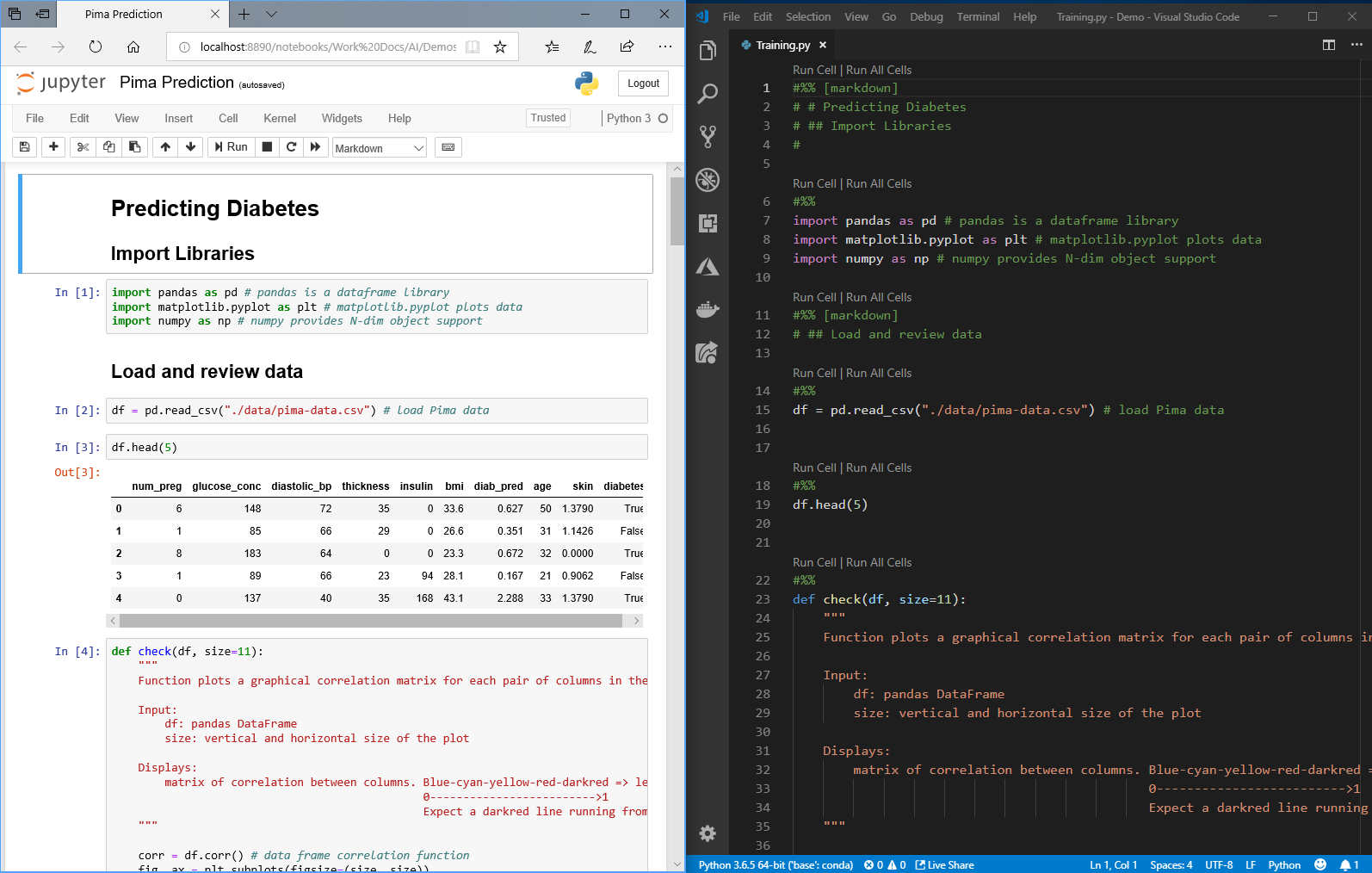

- VISUAL STUDIO CODE PYTHON CREATE VIRTUAL ENVIRONMENT INSTALL
- VISUAL STUDIO CODE PYTHON CREATE VIRTUAL ENVIRONMENT UPDATE
- VISUAL STUDIO CODE PYTHON CREATE VIRTUAL ENVIRONMENT WINDOWS
You can imagine you have your VSCode open and then separately have a PowerShell terminal open on the side. Please note they are two separate things: the python.xxx settings configure the debug sessions when you F5 on python codes, while the integrated terminal is a standalone environment outside of your VSCode. Let me know your thoughts.If I'm understanding your question correctly, you are trying to make the integrated terminal in VSCode work with your current set environment in Python extension. So, we have successfully ran the Python script on the Linux distro installed on WSL. This would run the python file and show the output in the terminal. Next, right click on file and select Run Python File in Terminal option to run the python file. The file should be visible in the VS Code now.Īdd the print statement as shown in below snippet. Next, you can run touch python.py command to create new file under HelloWorld folder. If you already have executed the activate command on terminal, then the VS Code terminal would also show the. Next, you can open the terminal inside it by using View > Terminal option and navigate to HelloWorld directory.
VISUAL STUDIO CODE PYTHON CREATE VIRTUAL ENVIRONMENT INSTALL
Visual Studio Code: Install Python Extension by MicrosoftĪfter installation is done, you will need to reload (blue button in place of install button) the VS Code. Click on install (green button) to install it.

You should see the extension as shown below. Then once the VS Code is open, go to the Extensions from VS Code left navigation, and search for Python, an extension ( ms-python.python) by Microsoft. Open the Visual Studio code as explained above (i.e. Then in the terminal, navigate to the newly created HelloWorld folder and then run below commands to create and activate the virtual environment with name. Now, create a HelloWorld folder, in which the new app will be created.
VISUAL STUDIO CODE PYTHON CREATE VIRTUAL ENVIRONMENT UPDATE
You can also run below script to update the python version and then install pip package manager and venv environments manager. So, ensure that python is installed by using python3 -version command. If you have Ubuntu-18.04 LTS installed in WSL, then it has the Python 3.8 already installed. If you have more questions about this client-server architecture in Visual Studio, you can refer this documentation page.
VISUAL STUDIO CODE PYTHON CREATE VIRTUAL ENVIRONMENT WINDOWS
Visual Studio Code Client Opened by Windows Not only this, but if you try to open any folder / file in this VS code instance, it would open a dialog from where you can select folders / files from the Linux file system as shown in below snapshot. But if you look at the status bar (bottom left corner), it would say WSL - ubuntu. This is the VS Code which you have installed on Windows. Once this is done, an instance of Visual Studio code will open. WSL will use client installed on windows and server from the Linux to facilitate the development on Linux. So, the whole VS Code is divided into two parts – client and server.

Linux Terminal – Instantiating VS Code ServerĪs you can see in above snapshot, it installs the VS Code Server component on WSL. for the first time, then this command may fetch some components from the web which are required to run VS code in WSL. Optionally you can also stay to the same path or you can navigate to Windows path mounted in Linux e.g. Then, navigate to any path on the Linux file system – which you want to open in Visual Studio code. Now, start the WSL prompt by running WSL command (and optionally providing the Linux distribution name in the command line). So, I assume we have all the ingredients required for this demo.


 0 kommentar(er)
0 kommentar(er)
